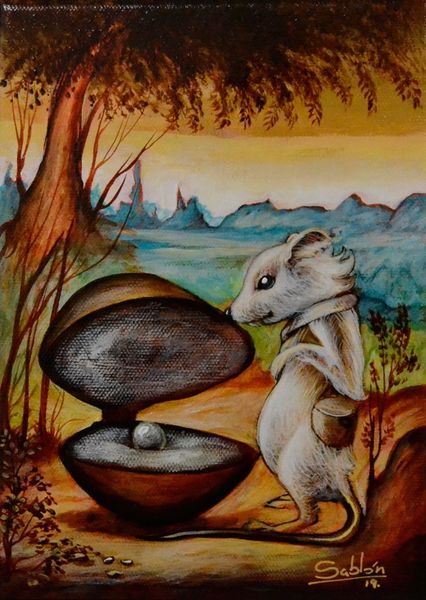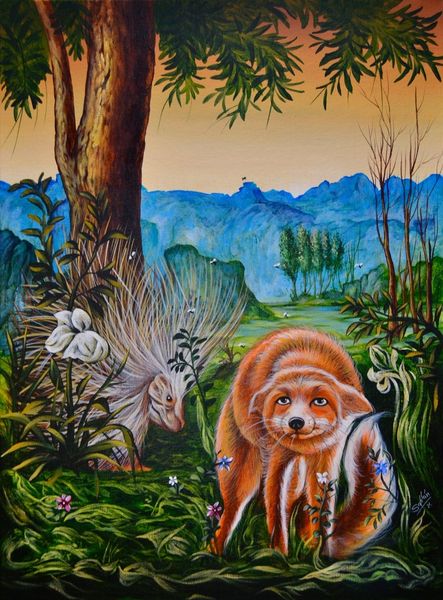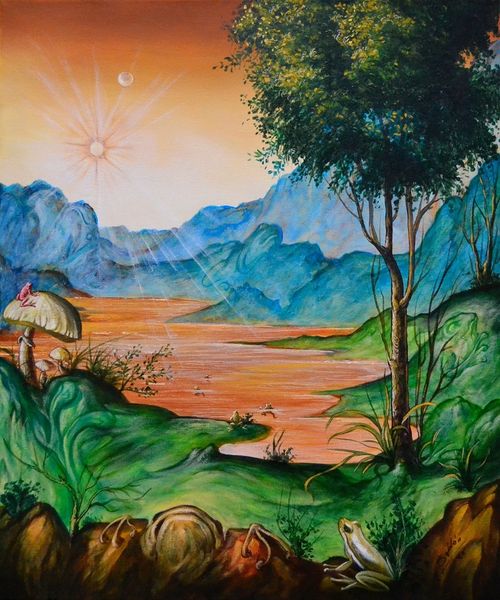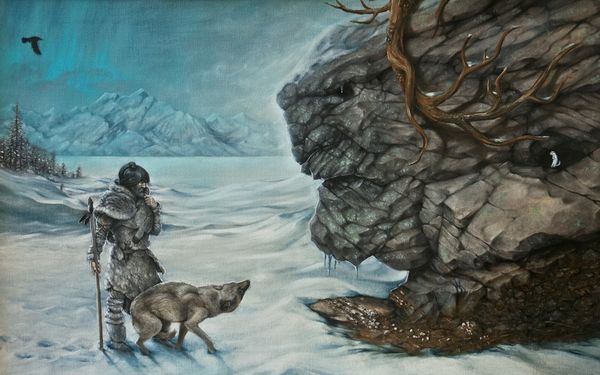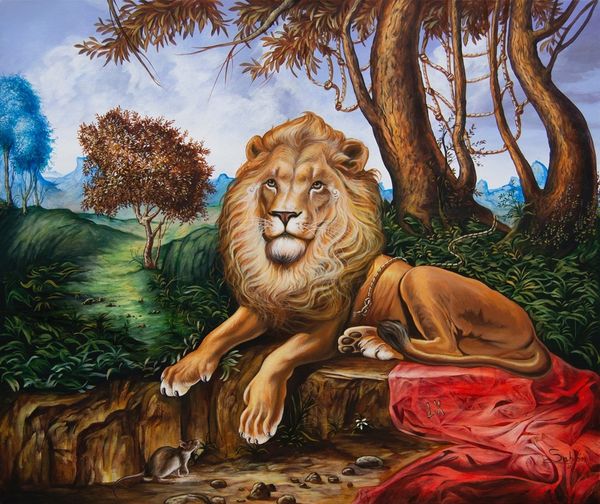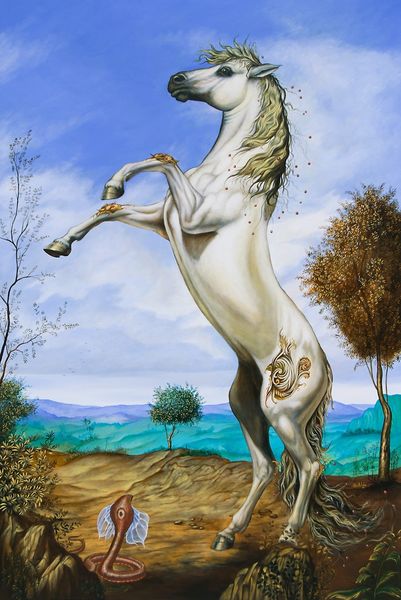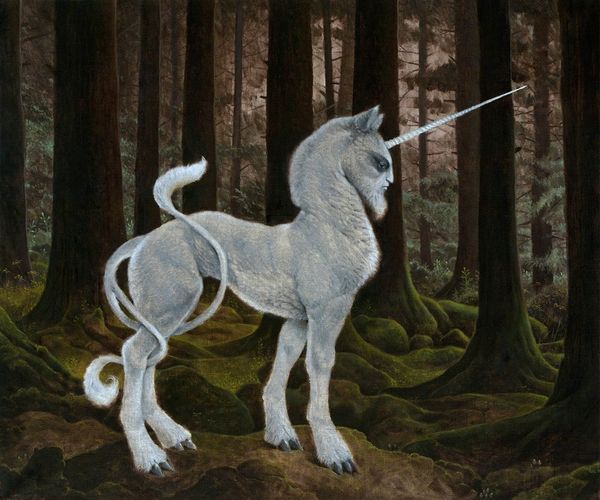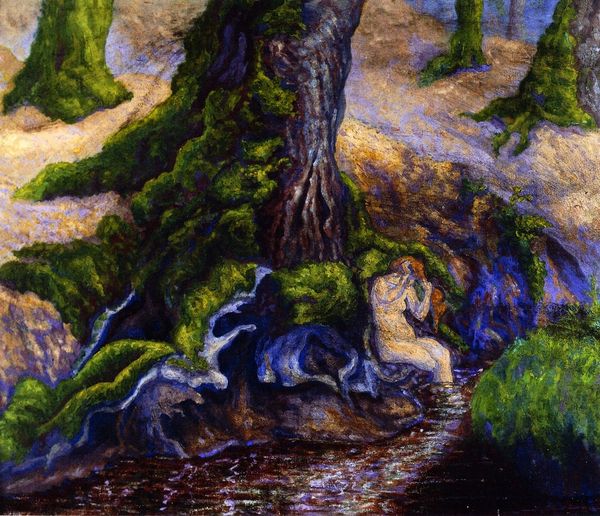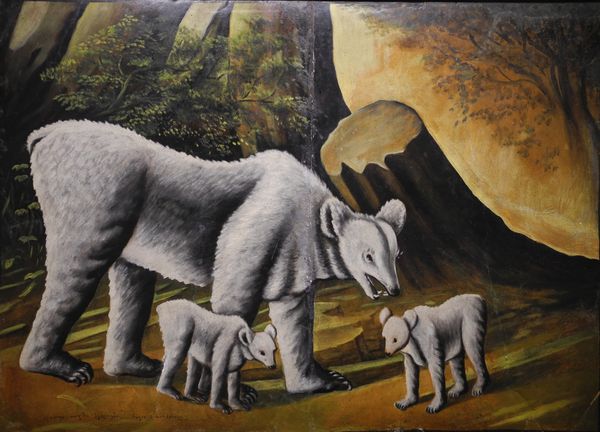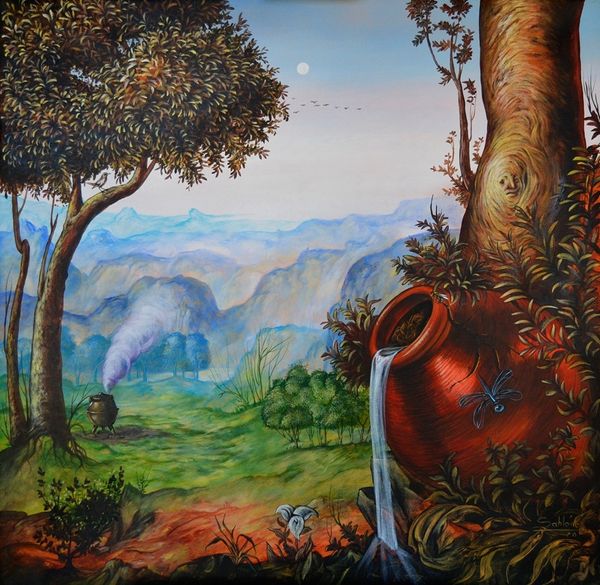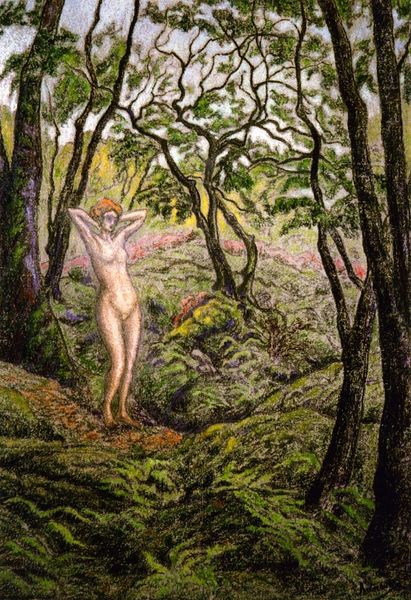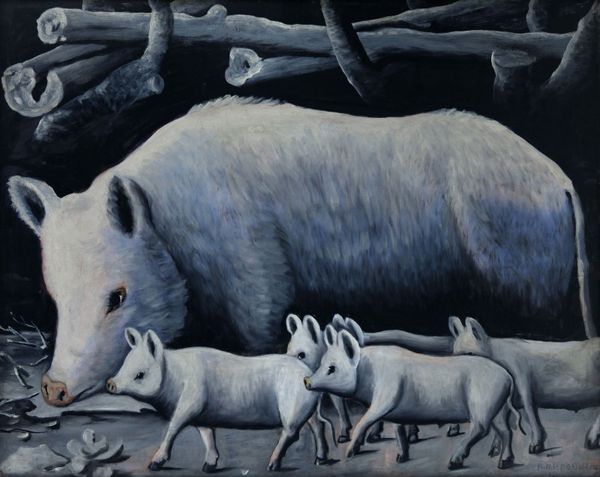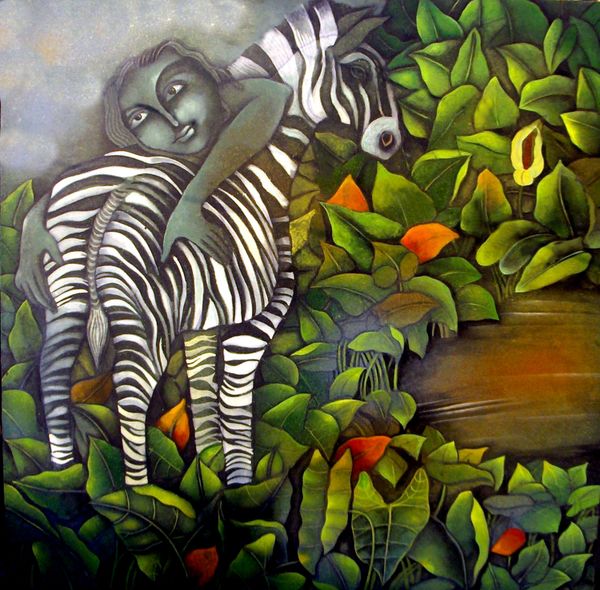
acrylic-paint
#
landscape
#
acrylic-paint
#
figuration
#
acrylic on canvas
#
realism
Copyright: Modern Artists: Artvee
Curator: We are looking at a canvas titled "Le chien qui lâche sa proie pour l’ombre", or “The dog who drops its prey for its shadow”. This acrylic on canvas dates from 2021 and is by the artist Carlos Sablón. Editor: The somber tones of this piece really strike me. There is such an evocative atmosphere and its rather curious, off-kilter symmetry creates this very poignant mood of...uncertainty. Curator: Indeed. I'm immediately drawn to the contrasts within the formal arrangement— the tension created by the use of a stark chromatic division in the landscape. The warmth of the foreground pulls away from the cooler tones in the backdrop, and the white dog seems like it's almost standing on the meeting place of these diverging aspects, bridging them even. Editor: Perhaps a mediation. Do you think the shadow is a commentary on distorted values, or is it pointing toward something more literal about appearances versus what is beneath the surface in Sablon’s community or cultural dialogue? The name certainly makes a knowing wink at something there. Curator: Well, one could look at how the reflected image lacks certain crisp details found in the real object, like how it flattens and loses some dimensional integrity and detail as pure representation—in contrast to the textured solidity and the perceived volume of the dog—as form in itself, and medium. One is less “real” as representation, the former becoming secondary through imitation or resemblance of the other. Editor: Fascinating, the artifice. So, where does this notion of losing sight of tangible gain for empty pursuit resonate more broadly? This image strikes me as one addressing contemporary issues around prioritizing illusions, especially given it’s relative newness, painted recently in 2021. I am left curious as to the impetus or the local discussion that fostered this perspective for Sablón. Curator: It encourages deeper inquiry to look more closely at formal constructions! It demonstrates to the viewer through visual syntax alone how forms may relate independently from their contextual significations, or their capacity to trigger a specific interpretive narrative that's attached externally. That’s where real meaning emerges as felt and reflected by the individual. Editor: That resonates deeply and provides a strong path for greater analysis. A brilliant encapsulation, thank you!
Comments
No comments
Be the first to comment and join the conversation on the ultimate creative platform.
